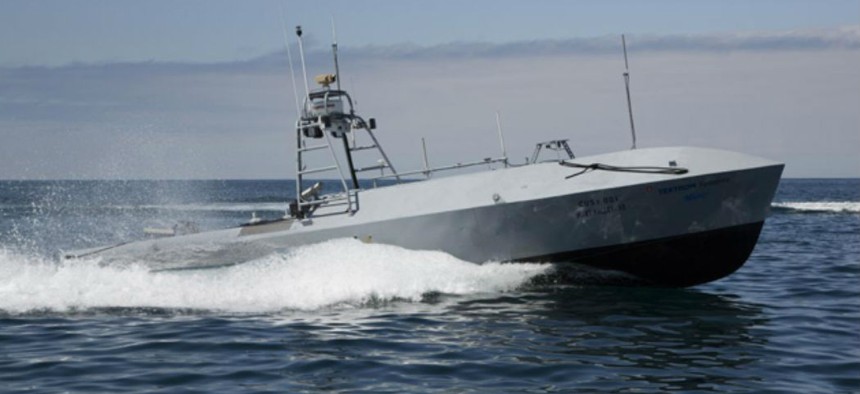
Navy pursues advanced drone ship mine-hunting tech
The use of an entirely unmanned team of vehicles to search for mines frees complex amphibious operations from the threat of mines and protects the lives of Navy personnel.
The Navy is continuing to move forward with development of the Unmanned Influence Sweep System (UISS) countermine technologies as part of its overall effort to create a fleet of unmanned vehicles capable of enhanced coordination while performing a wider range of technical operations.
The Navy most recently affirmed its commitment to the UISS and the unmanned vehicle fleet concept by granting a $14,820,302 contract modification to Textron Systems for the exploration of further options for the mine countermeasure systems necessary for the UISS and the completion of more units in support of these systems.
The UISS is made of a minesweeping unit and the Textron Common Unmanned Surface Vehicle (CUSV) that tows it. As Defense Systems previously reported, the UISS locates and detonates sub-sea mines through emitting sounds and magnetic signatures that replicate those of a ship in order to set off mines programmed to detect passing ships.
Development of the UISS is a direct result of the Navy’s need to detect and neutralize mine threats across a wide area quickly. The use of an entirely unmanned team of vehicles for this purpose is crucial to freeing complex amphibious operations from the threat of mines and saving the lives of Navy personnel.
The CUSV, an essential component of the UISS, is one of the Navy’s and Office of Naval Research (ONR)’s Unmanned Surface Vessels (USV), which officials describe as being able to perform detection and surveillance, as well as attack missions. Textron reports that the CUSV is capable of traveling for up to 20 hours with a 4,000-pound load at speeds up to 20 knots per hour.
In addition, according to the U.S. Naval Institute, the CUSV is being designed so that it can be easily transitioned between roles as a minesweeper, and a mine hunting and detonating support craft, with the ability to tow side-scan sonar, mine neutralization equipment, intelligence, surveillance and reconnaissance technology (ISR), and nonlethal weapons.
“Unlike purely remote controlled boats, these [USVs] are able to perceive their environment and plan their routes without human intervention,” Robert Brizzola, program manager, Sea Platforms and Weapons, ONR, said.
The increasing focus on USV development is part of the Navy’s “ghost fleet” concept. Reported on by Defense Systems in February, the concept aims to integrate new technologies and weapons with unmanned platforms to carry out a more diverse set of operations. The “ghost fleet” idea is also part of the Navy’s foray into the world of artificial intelligence (AI), as it involves computer software systems that are able to independently perform functions with a very limited need for human intervention.
The contract is fixed-price-incentive, meaning that Textron will receive a fee for fulfilling the contract that will increase or decrease depending on whether work is completed within or above the given budget. The full amount designated for the contract modification is being allocated from the FY17 Navy Research, Development, Test and Evaluation budget category and work is expected to be completed by September 2018, though funding is not set to expire at the end of the current fiscal year.